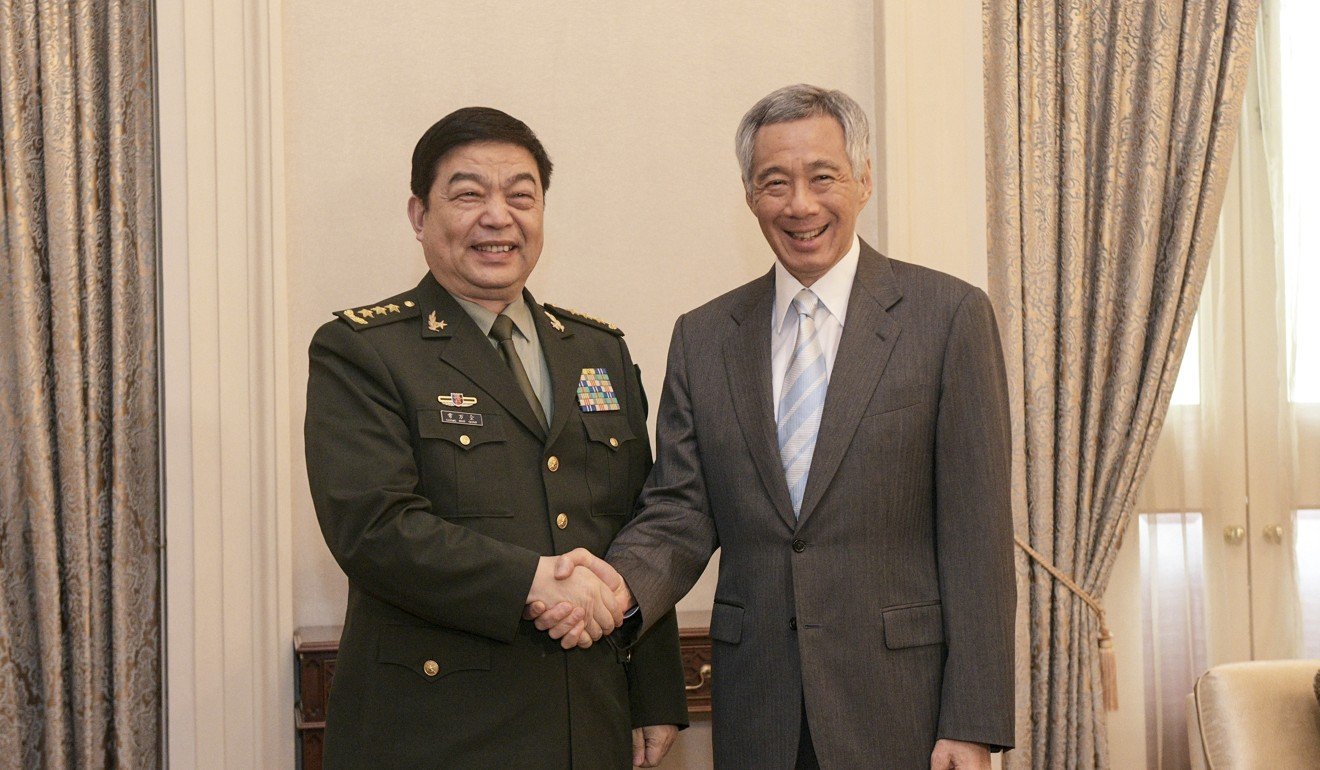
Philippines seethes over Chinese build-up in South China Sea
President Rodrigo Duterte has tried to thaw ties with Beijing, but public pressure is growing to take a tougher stance to defend the nation’s maritime claims, writes Richard Heydarian
Amid rising uncertainty over US leadership in Asia, China has doubled down on its charm offensive across Southeast Asia.
Under Singapore’s chairmanship of the Association of Southeast Asian Nations, Beijing is rapidly deepening military-to-military relations with its smaller neighbours.
During the Asean Defence Ministers Meetings Plus earlier this month, China and Southeast Asian countries agreed on a series of new initiatives to solidify their burgeoning ties.
Later this year, the two sides are set to hold their first-ever joint naval drills, signalling warming ties as well as China’s emergence as the new pre-eminent force in the region.
They also reiterated the importance of operating various confidence building measures such as the proposed code for unplanned encounters in both air and sea. This way, all sides hope to avoid accidental clashes and other forms of misunderstanding in maritime flashpoints such as the South China Sea
China’s defence minister, Chang Wanquan, who represented the Chinese side during the meeting, reaffirmed his country’s “deep friendship” with Asean.
He spent five days in Singapore where he also met Prime Minister Lee Hsien Loong, for a series of meetings aimed at ensuring ties are on an even keel.
China and Singapore have been at odds in recent years over the latter’s warming relations with the United States and Taiwan, which Beijing treats as a renegade Chinese province. Singapore has also strained relations with China by emphasising compliance with international law, including the Philippines’ landmark arbitration award at The Hague contesting China’s claims in the South China Sea.
Yet, relations have swiftly recovered in recent months.
Singapore holds a particularly important role in Beijing’s ties with its southern neighbours since the city state is currently both the rotational chairman of Asean as well as country coordinator for Asean-China relations.

Yet, regional maritime disputes continue to be a source of tensions between China and some its regional neighbours, particularly Vietnam.
During the Asean foreign ministers meeting, which was held during the same week in Singapore, regional diplomats did raise concerns over South China Sea disputes.
According to Singapore’s Foreign Minister, Vivian Balakrishnan, who chaired the meeting, Asean took “note of the concerns expressed by some ministers on the land reclamations and activities in the area, which have eroded trust and confidence, increased tensions and may undermine peace, security and stability in the region”.
In particular, regional states have been worried about China’s alleged militarisation of its reclaimed land features in the South China Sea.
According to various reports, Beijing has reclaimed as much as 290,000 square meters across the disputed Spratly chain of islands and beyond last year, including features claimed by Southeast Asian nations such as the Philippines.
China’s expanding strategic footprint in the area has presented new challenges to burgeoning ties with countries such as the Philippines, which has sought warmer ties with the Asian powerhouse under President Rodrigo Duterte.
In response to growing public pressure to take a tougher stance on Chinese maritime assertiveness, the Filipino president imposed new restrictions on maritime scientific research by Chinese and other foreign entities in the Benham Rise, which lies in the Western Pacific and is part of the Philippines’ extended continental shelf.
China has been seeking permits for scientific research in the strategically located area, which is rich in seabed mineral resources as well as fisheries. Yet, elements within the Philippine government and civil society have heavily opposed granting China access in the area.

The move is likely to provoke vigorous criticism, and possibly even armed countermeasures by China, which also claims the Philippine-occupied feature – the second largest in the disputed Spratly chain of islands.
There are also calls, especially from China hawks, for the Philippines to strengthen maritime security cooperation with the US, Japan, Australia, and India, which seek to constrain Beijing’s maritime ambitions.
Duterte seems committed to strong ties with China, but the Philippines’ defence establishment is toughening the country’s position in both its eastern (Benham Rise) and western (South China Sea) flanks.
Nevertheless, China will maintain the strategic high ground in the area, partly thanks to its vast military superiority as well as its diplomatic acumen. Asean is expected to emphasise dialogue rather than confrontation.
As the Singaporean foreign minister put it, the “situation in the South China Sea is calmer now” and there is “a shared good faith and goodwill on both sides to try to … make a significant advance this year”.
Eager to land in the good graces of Beijing, which has offered large-scale economic incentives to friendly nations, Southeast Asian countries seem to view diplomacy rather than strategic resistance as the best way to deal with the new regional superpower.
Richard Heydarian is a Manila-based academic and author

